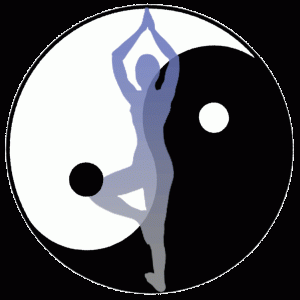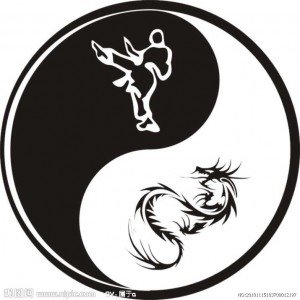by Casey Kochmer
A starting definition: The nature of change, balanced as two halves of a whole.
Yin and Yang is perhaps the most known and documented concept used within Taoism.
Yin and Yang is the concept of duality forming a whole. We encounter examples of Yin and Yang every day. As examples: night (Yin) and day (Yang), female (Yin) and male (Yang). Over thousands of years quite a bit has been sorted and grouped under various Yin and Yang classification systems.
Yin and Yang illustrated from the Tao Te Ching [2]
When people see things as beautiful,
ugliness is created.
When people see things as good,
evil is created.
Being and non-being produce each other.
Difficult and easy complement each other.
Long and short define each other.
High and low oppose each other.
Fore and aft follow each other.
Diving Deeper into Yin and Yang
A few basic concepts which define the nature of Yin and Yang are:
- Neither Yin nor Yang are absolute. Nothing is completely Yin or completely Yang. Each aspect contains the beginning point for the other aspect. For example: day becomes night and then night becomes day…Yin and Yang are interdependent upon each other so that the definition of one requires the definition for the other to be complete.
- Yin and Yang are not static. The nature of both Yin and Yang flows and changes with time. A simple example is thinking about how the day gradually flows into night. However, the length of day and night is changing. As the earth ages, its spin is slowing, causing the length of day and night to get longer. Day and night are not static entities. Sometimes the changes in Yin and Yang can be dramatic where one aspect can literally just transform into the other. As an example: some species of fish have females that transform quickly into males when the population of males aren’t enough.
- The summation of Yin and Yang form a whole. One effect of this is: as one aspect increases the other decreases to maintain overall balance of the whole.
- The balance of Yin and Yang can be skewed due to outside influences. Four possible imbalances exist: (a) Deficiency Yang; (b) Deficiency Yin; (c) Excess Yang; (d) Excess Yin. These imbalances can be paired: so an excess of Yin can also simulate a Yang deficiency and vice versa. As an example this concept is especially important for Chinese healing practices. So an excess of Yang results in a fever. An excess of Yin could mean the accumulation of fluids in the body. Chinese healing examines a person’s health is in terms of the eight principles: Internal and External stimuli, Deficiency and Excesses, Cold and Heat and Yin and Yang.
- Yin and Yang can be subdivided into additional Yin and Yang aspects. For example a Yang aspect of Heat: can be further subdivided into a Yin warm or Yang burning.
- Additional principles defining Yin and Yang qualities exist. The concepts listed here are merely a starting point to illustrate the nature of Yin and Yang. Usually as a practice Taoism does a good job of not codifying life. Which is ironic since many Taoist’s can happily list out what is Yin and what is Yang. Typically Taoist texts will list a few examples of Yin and Yang and then meander off to the next topic. Which makes sense as from a Taoist perspective it’s for the reader to reveal life from their own perspective. As an example go back to the Taoist passage quoted above from the Tao Te Ching. You will discover a few additional aspects to Yin and Yang, but the passage isn’t a complete definition either. The author of this passage fully expects you as the reader to go out and to explore the ideas on your own.
Additional material for Yin Yang can be read here:
Encyclopedia of Philosophy: Yinyang
Now forget everything you have learned about Yin and Yang for a moment. Step back from all the descriptions and classifications of Yin and Yang to consider the following passage from the Tao Te Ching:
The Way begot one,
And the one, two;
Then the two begot three
And three, all else.
A clearer understanding of Yin and Yang requires looking back into the Tao. The Tao can be considered as the fundamental absolute. Upon examination: the nature of the Tao expands out. This process of expansion defines a pattern, splitting apart into finer and finer patterns. Yin and Yang is the point where perception demarks the Tao’s expansion from one into two.
Taoism as a practice enjoys examining patterns. Over the years countless sects of Taoism have formed and quite a bit of literature written over the delineation and description of these patterns. Often times Taoists use the concept of Yin and Yang as a familiar starting template to work with patterns.
 For example Qigong is based upon the patterns of breath and physical movement. Knowledge of bodily patterns forms the basis of this Taoist practice to keep a body healthy. The human body and its movements are divided according to Yin and Yang categories. So the upper body corresponds to the Yang, while the lower body roots into the Yin. The body’s center is where the Yin and Yang meet. Qigong exercises are grouped and explained in terms of Yin and Yang to help classify the body’s harmonies into a working practice. Knowledge of Yin or Yang isn’t required to perform Qigong, instead it’s an additional filter which helps people connect to the practice.
For example Qigong is based upon the patterns of breath and physical movement. Knowledge of bodily patterns forms the basis of this Taoist practice to keep a body healthy. The human body and its movements are divided according to Yin and Yang categories. So the upper body corresponds to the Yang, while the lower body roots into the Yin. The body’s center is where the Yin and Yang meet. Qigong exercises are grouped and explained in terms of Yin and Yang to help classify the body’s harmonies into a working practice. Knowledge of Yin or Yang isn’t required to perform Qigong, instead it’s an additional filter which helps people connect to the practice.
Another example is Taoist divination within the Book of Changes / I Ching. Divination in Taoism is a practice of examining human interactions based on well known psychological patterns. To generate a result either coins or yarrow stalks are tossed down to form a pattern. The patterns generated correspond to Yin and Yang defined qualities. The nature of the Yin and Yang pattern are applied against the psychology of the moment to return advice for the person asking the question.
Yin and Yang is a fundamental aspect of Taoist thought. We always naturally apply human based values over naturally occurring patterns. However, remember it’s also important not to chase finer and finer descriptions of these patterns, to do so would be to chase down infinity.
Yin and Yang is a system of recognizing how to separate out patterns in our life while also relaxing to accept the overall whole and complete nature of the Tao.
http://personaltao.com/taoism-library/questions/what-is-yin-yang/
 Casey Kochmer: I teach kindness and help people explore life. The process is modest and requires no judgment. To post a bio here has no meaning for me, instead it really needs to help a reader see angles of their own path ahead. Discovering A Personal Tao is opening to your own journey. Work with your own potential to discover grace, so I send you a blessing towards taking the time to always dream … even when awake, it’s your life to embrace.
Casey Kochmer: I teach kindness and help people explore life. The process is modest and requires no judgment. To post a bio here has no meaning for me, instead it really needs to help a reader see angles of their own path ahead. Discovering A Personal Tao is opening to your own journey. Work with your own potential to discover grace, so I send you a blessing towards taking the time to always dream … even when awake, it’s your life to embrace.

One Response to What is Yin–Yang?